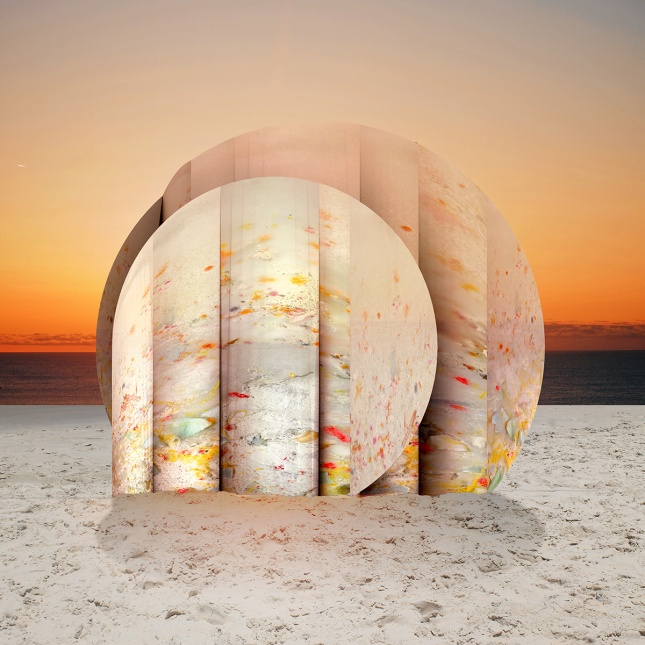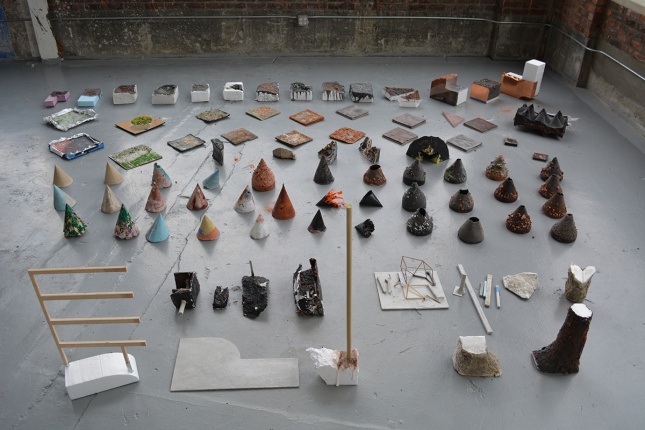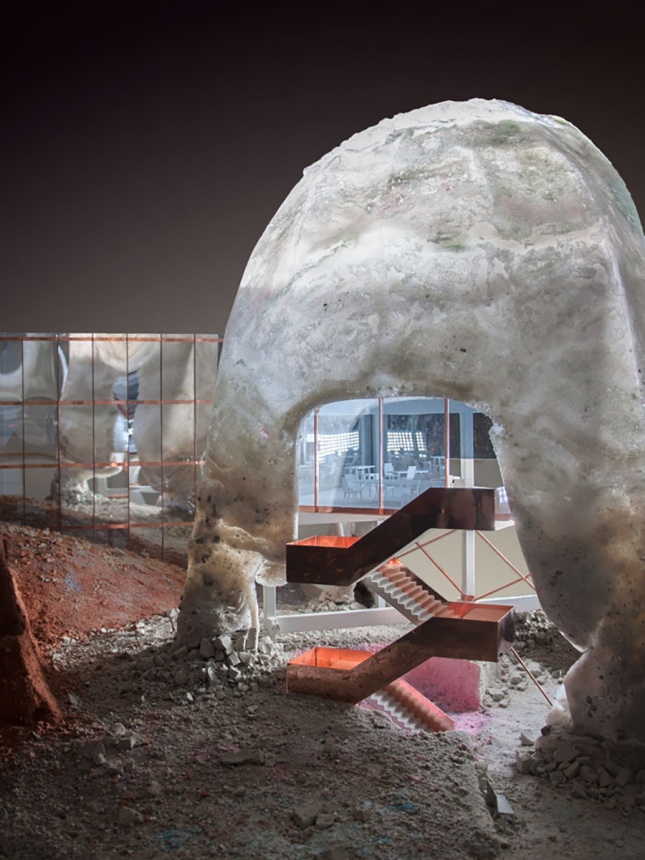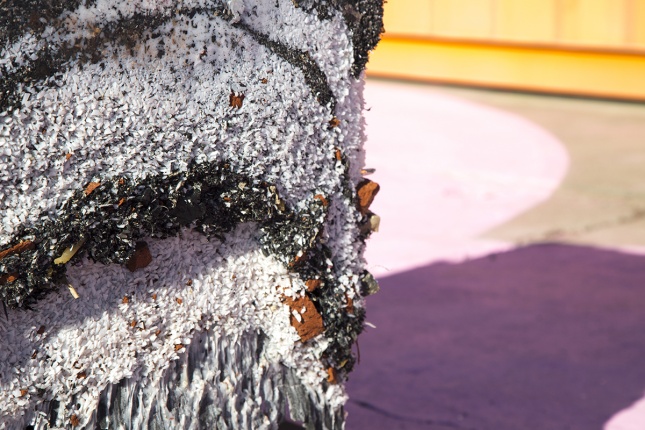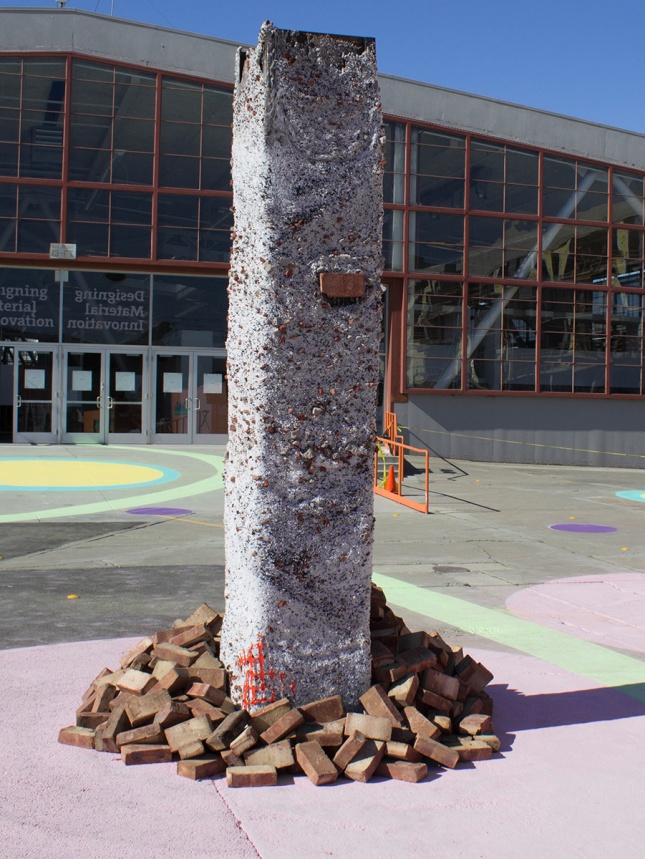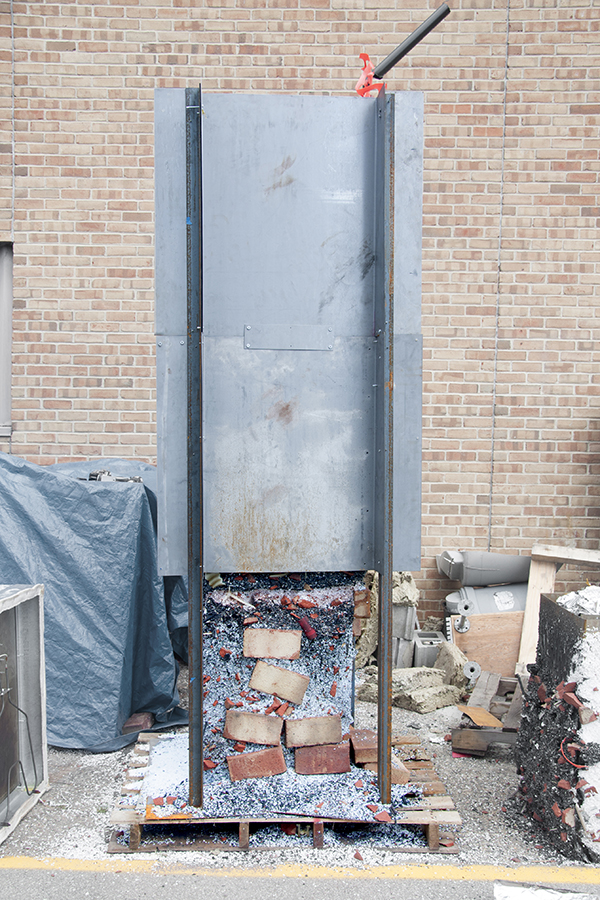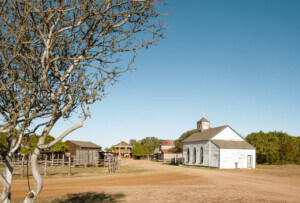Wrangling with the issues of pollution and industrial waste, Ann Arbor, Michigan–based collective T+E+A+M is pushing forward with innovative approaches to appropriating and reinterpreting the industrial relics of America’s Rust Belt. T+E+A+M draws upon the postindustrial landscape—often Detroit—as a source of inspiration, places where disused materials are salvaged, recast, and used as architectural tools and standalone structures.
Based out of the University of Michigan’s Taubman College of Architecture and Urban Planning, T+E+A+M is a collaboration between architects Thom Moran, Ellie Abrons, Adam Fure, and Meredith Miller. Miller and Moran are developing an innovative construction material they call “Post Rock.” Post Rock is a lab-made re-creation of the naturally occurring plastiglomerate—a relatively new geological substance composed of discarded plastic, sedimentary granules, and other debris. The team simulates this process and speculates how to build architectural forms from the agglomerated matter. The inherent durability of petrochemical polymers and sedimentary products strengthens the case for their use in construction.
Post Rock consists of a mix of polymer and inorganic sources. The recycled product is formed either “in situ” where the materials are stacked and thermocast, or as “clastic,” which derives its cylindrical shape from rotational thermoforming conducted in the lab. Through three speculative design projects envisioned with digital rendering, Miller and Moran have upscaled their Post Rock prototypes into architectural works. Three categories—Urban Beach, Agribusiness, and Suburban Domestic—are composed of three distinct mixes of polymers and inorganic sources.
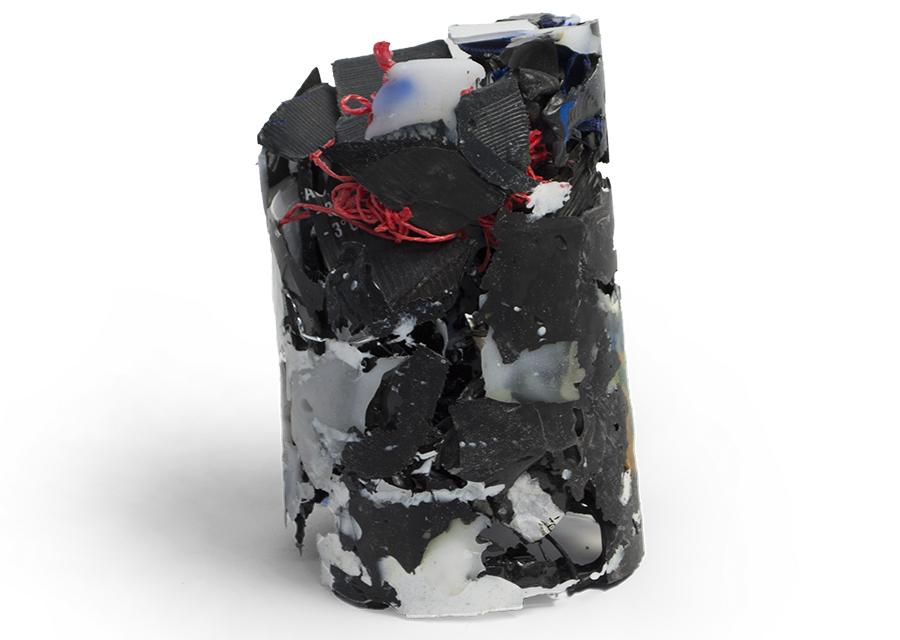
Unveiled at the 2017 Designing Material Innovation Exhibition at California College of the Arts, the Clastic Order is a “new architectural order” fabricated from stacked and thermocast Post Rock. By casting the recycled material to create monolithic columns, T+E+A+M utilizes a process similar to a slipforming technique that entails the constant pouring of materials, creating new layers of structure. T+E+A+M described this casting process as one “based on material behavior under heat and gravity,” allowing for each monolith to possess multiple physical characteristics reflecting the ratios of components, colors, and textures found in each cast.
The utility of the Clastic Order as a construction technology is yet to be fully tested. However, Moran hopes that it could be strengthened to fully merge the compositional with the decorative and structural in the spirit of the Roman arch. He views their approach as a radical solution that envisions remanufactured waste products as a tappable and nearly unlimited resource of “building material similar to iron and concrete.”
T+E+A+M has ongoing projects, such as Clastic Order, that demonstrate promising decorative and structural uses of these refashioned industrial leftovers. They are currently researching the potential scaling-up of their techniques, and the development of a patent covering the use of their plastic-based materials as a form of facade and interior cladding. Moran acknowledged that while these approaches are wholly plausible, they will require testing and research.






